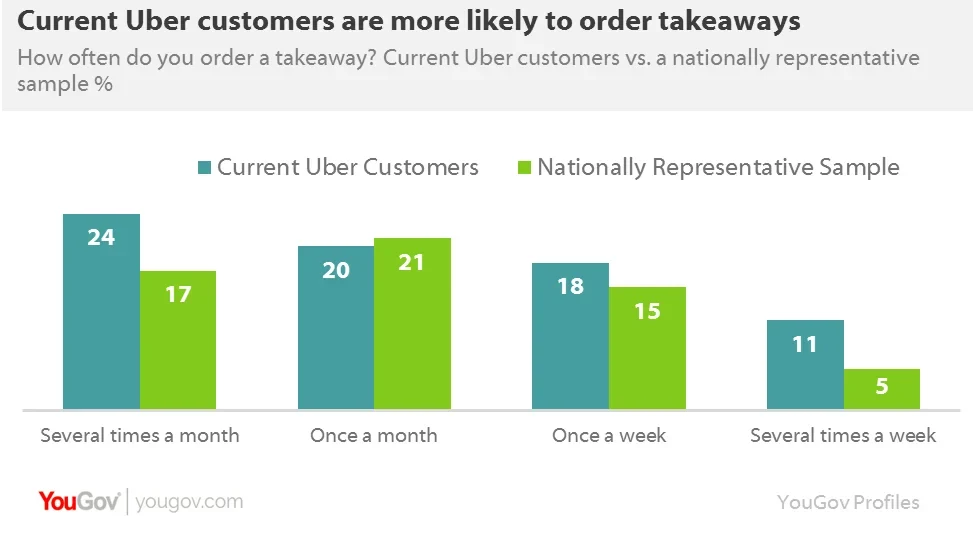The food delivery sector is booming and Uber is getting on board with its UberEats service.
Competing with rivals such as Deliveroo, Uber’s bosses will be hoping that those that have got on board with the company as a taxi service will be attracted to its new venture as well.
YouGov Profiles data indicates that there are encouraging signs for its food delivery service among its car customers.
Just over one in ten (11%) current Uber users have a takeaway several times a week, compared to 5% of the population as a whole.

Added to this, just under a quarter (20%) of the same group order a takeaway several times a month, against 17% of the wider public.
On the face of it this would appear to be a money spinning opportunity as a quarter (25%) of Uber users spend £6 - £10) on takeaways per month and approaching one in five (19%) say they spend £11-£20.
However, while there is big potential, there are warning signs about a downside both for UberEats and others in the market.
Controversy surrounds the ‘gig economy’ and has put pressure on brands with ‘self-employed’ drivers.
Drivers have complained that brands can sometimes fail to pay them either the minimum or living wage as well as having concerns about the lack of secure employment, holiday pay and guaranteed hours.
YouGov BrandIndex data shows that perception of Uber’s main operational arm has suffered due to adverse press stories
It’s Impression score currently stands at -10 among those that are either former customers or those that have never used the service. However it is far healthier among current customers (+50).
So while there is an obvious appetite for the service UberEats provides, as well as a clear opportunity to engage consumers of its car service, for the brand’s ventures to truly take off it may have to placate the public’s concerns about its workers’ wage worries.
Image PA
This article originally appeared in City A.M.







